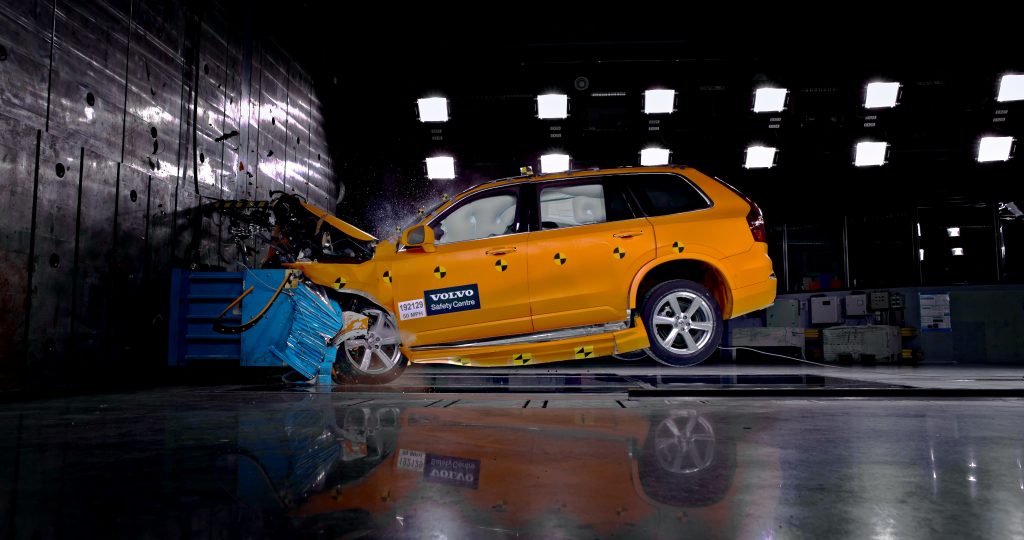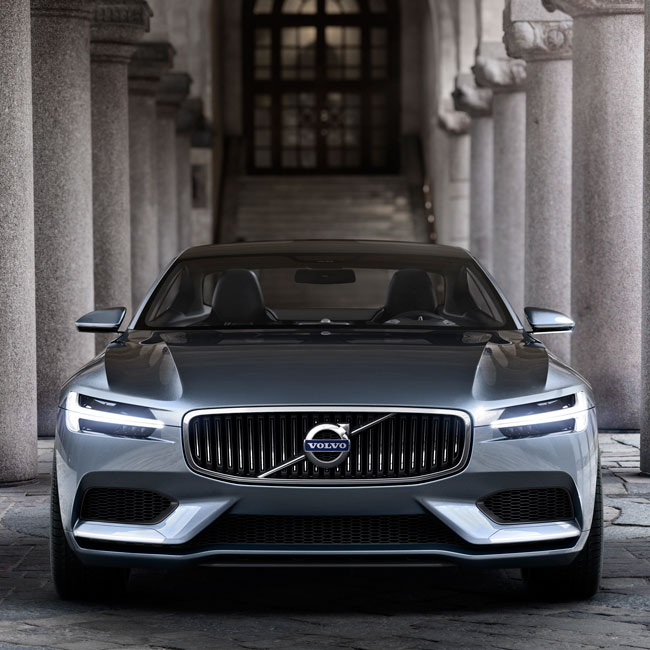Volvo’s More Inclusive Safety Developments
The brand’s crash-test dummies and new tech continue to make it a pioneer in safety

Since Volvo introduced the three-point seatbelt in 1959—which they then shared industry-wide—safety has been core to the brand. Over time, Volvo has pioneered more and more technology, and today cars from Mercedes, Ford, Audi and others have myriad safety systems. There’s ABS that pulses the brakes rather than allows them to lock and stability control that helps prevent a car from rotating during cornering or emergency maneuvering. There’s more advanced tech that will stop or slow a car before an accident, thanks to automatic emergency braking systems that sense when you’re too close to a vehicle ahead, or that the car adjacent to you has gone into a skid and you’ve missed that split-second window to apply the brakes. There’s also automatic lane-keeping—Volvo’s own systems can detect if you’re about to veer into a pedestrian or cyclist and try to prevent that.

Volvo’s Accident Research Team fans out across Sweden to examine real-life accidents. They’ve studied 44,000+ crashes involving Volvos—and the brand has been forthcoming in sharing its forensic knowledge with other carmakers. Yet all of this technology hasn’t made us exponentially safer. The accident rate in Sweden and the US—and indeed worldwide—hasn’t fallen as rapidly as carmakers would hope.
In the United States in 2017 (the most recent year with complete data), the number of people killed in car accidents was 37,133, according to the Insurance Institute for Highway Safety. The rate per capita is about half of what it was 40 years ago, so safety is improving, but there’s a another pernicious statistic that should alarm everyone: according to the Governor’s Highway Safety Association, pedestrian deaths in 2018 increased 35% since 2008 and reached their highest level since 1990.

The increase in pedestrian death suggests drivers are actually less alert to their surroundings than they were in the past. Technology hasn’t made us better drivers, either. And indeed, the moment we leave driver’s ed in the US, we’re only learning in the field—unleashed without any instruction to let us know if we’re doing a good job.
On top of that, Volvo’s Jan Ivarsson, senior technical advisor for safety, says that carmakers and governmental testing bodies are guilty of using bad data—information science that’s as outdated as cars from the 1960s.

For example, the design of crash-test dummies is discriminatory—and always has been. Dummies are based on an “average-sized” male, and even that “average size” is antiquated since we’re getting taller and heavier. Moreover, there’s no mandate to test with a model based on the “average-sized” woman. This is especially pernicious because Volvo’s research shows that women are more likely to be hurt by whiplash, are more likely to suffer chest injuries (particularly during side impacts) and are more likely to hit their heads on the steering wheel during crashes.
Volvo has designed its airbags and driver’s seats around this knowledge base, and now—using over 40 years of field research data from the Accident Research Team, as well data learned from being the first automaker to use female crash-test dummies—they have a chronicle of more than 70,000 accidents and simulations.

And now Volvo’s sharing that entire library with any carmaker that wants access, as well as regulatory bodies. Ivarsson says, even though safety shouldn’t be about cost, unfortunately, governments and carmakers don’t see the cost of human life or of injury as part of a car’s purchase price. He believes the reality is that safety technology is expensive and social benefit isn’t enough to move the needle. Instead, it must be made cheaper to implement. He explains, “We want to share our data because, if we can influence not just other manufacturers but also suppliers, we can take down the costs of safety for all carmakers—and that means for Volvo cars as well.”
The result of this is, that if another carmaker doesn’t want to spend the money to use “women-sized” crash-test dummies, they can use Volvo’s data and calibrate their own sensors and airbags (and seat vendors) to reduce the risk to women. In turn, that benefits Volvo, too.

Volvo safety VP, Malin Ekholm, says the next step comes back to the broken driver’s ed model—there’s no feedback loop to modify driver behavior. While lane-keeping or emergency braking can do that to an extent, those systems aren’t diagnosing the cause of the lazy or distracted dangerous driving behavior. This is why Volvo is set to add in-cabin cameras to examine what the driver is up to.
Ekholm tells us that the company has thousands of hours of lab testing data (for which volunteers consented to have their movements tracked and codified) that means they can identify gaze patterns and head motions associated with distraction, as well as those of inebriation.

Volvo’s system (which will roll out in 2021 generation cars and beyond) will be able to warn a driver about distracting behavior—and then, for example, if a driver doesn’t stop texting, the car will steer itself off the road. If the driver is actually sick, drunk or unresponsive, the car can contact emergency services.
Volvo’s surveys show drivers want more safety tech, but that the real challenge is introducing technology that also doesn’t allow for even poorer driving. Håkan Samuelsson, Volvo’s CEO, acknowledges this risk, saying they’re looking at ways around that issue, but believes that like with seat-belts (which Volvo first introduced way back in 1959) we will simply have to evolve slowly. He also says this isn’t some kind of Big Brother solution either, “If a car can recognize this driver is intoxicated, they’re giving up individual freedom. They don’t have the right to kill children.”
Samuelsson continues that the carmaker will have to err on the side of what Volvo’s always done: to continue to push boundaries in every way possible, in order to continue being safety pioneers.
Images courtesy of Volvo












